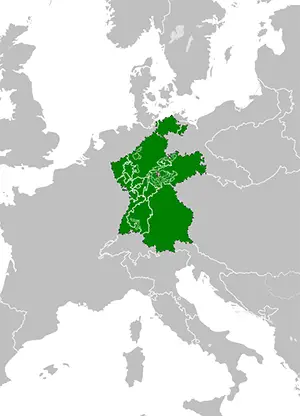The War of the Fourth Coalition
Part 1: From One War to the Next The War of the Fourth Coalition was one of a series of conflicts between France and other European countries in the early 19th Century.  The Treaty of Pressburg, agreed to on December 4, 1805, took Austria out of the previous conflict, the War of the Third Coalition, and technically ended it. Austria's allies in that war, Russia and the United Kingdom, did not declare peace, but both had been defeated decisively by France and had withdrawn from various fronts. Austria had given up large amounts of German territory as a result of its defeat, and the French Empire had abolished the Holy Roman Empire and then consolidated a large part of those lands into the Confederation of the Rhine, a French buffer state the borders of which were startlingly close to Prussia. France announced the Confederation in August 1806. A mere two months later, Prussia declared war on France. This began the War of the Fourth Coalition. Not waiting for an invasion, French Emperor Napoleon Bonaparte launched an attack of his own. French troops smashed through Prussian defenses and right away inflicted heavy losses, including Prince Louis Ferdinand, the nephew of Prussia's King Frederick William III, who was killed on October 10 at the Battle of Saalfeld. Prussia retreated and recovered and then committed large numbers of men and weapons to a pair of battles that occurred on the same day, Oct. 14, 1806. At both Auerstädt and Jena, French armies scored overwhelming victories, with Marshal Louis-Nicolas Davout winning big at the former despite being heavily outnumbered. Aiding the French victory at Jena was the timely arrival and quick thinking of Marshal Jean Lannes, who arrived with a small force and occupied the town, then seized the high ground surrounding the town. In the face of determined opposition by a larger Prussian force, Lannes's small force kept control of that position, even to the extent of widening and deepening an existing path in order to facilitate the dragging of artillery up onto the heights. 
The battle commenced early the next morning, with French attacks against the Prussian flanks, giving the main French army an opportunity to get into prime position to make a push. The French made that push and drove the Prussians back, steadily then haltingly. In the midst of a trend toward the French Army gaining steady ground, Marshal Michel Ney and his men charged straight into the battle, driving a wedge so far into the Prussian lines that they found themselves surrounded. Bonaparte, who was with this force and not at Auerstádt, ordered Marshal Jean Lannes's troops to shift from the center and rescue Ney, while also plugging the gap created from the shift of Lannes's troops with the Imperial Guard. The French reinforcements fought their way through to Ney's trapped men and got them out of trouble. With so much focus on that aspect of the battle, Prussian troops could have then counterattacked and likely scored a victory; instead, they waited. With Ney and his men out of immediate danger and Lannes and his men ready to refocus, Bonaparte ordered a hard charge from all across the line. In prime position was Marshal Joachim Murat. The result was a fleeing Prussian army, which lost 10,000 of its numbers in killed or wounded. In addition, the victorious French soldiers claimed 15,000 prisoners and 150 guns.  Next page > Ending of the Coalition > Page 1, 2 |
|
Social Studies for Kids
copyright 2002–2024
David White




